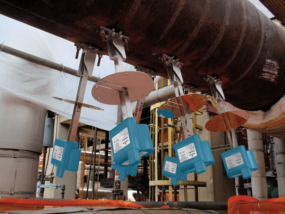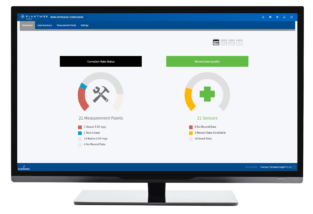To remain profitable, most refineries are examining ways to reduce costs and boost production, and one of the first points of focus is feedstock cost as purchasing crude oil makes up the majority of refinery operating expenses. Opportunity crudes are often the answer to this matter, but behind the attractive lower price, these crude types have undesirable chemical characteristics such as high total acid number (TAN) and high sulfur content that are a threat to plant equipment and pipework.
Processing feedstock based on a higher concentration of opportunity crudes leads to operational challenges that must be monitored closely, especially in regard to potential corrosion. The corrosion threat increases exponentially depending on the production regime that can, in many times, change the crude diet significantly within days or hours. In those cases, traditional manual corrosion monitoring techniques are insufficient and often result in excessive mitigation programs and overdosing of chemical treatments.

An array of wireless ultrasonic sensors for corrosion and erosion monitoring.
Continuous monitoring of corrosion risk and impact using non-intrusive wireless sensors enables knowledge-based decisions to support operators to run a refinery at its full potential, increasing uptime and safety. Monitoring corrosion risk provides early warnings to process conditions that may harm the asset, allowing for better and faster mitigation responses. At the same time, it provides valuable data to optimize process parameters and support feedstock management.
Most refineries that have adopted online corrosion monitoring techniques started to implement the system in Crude Distillation Units (CDU) and Vacuum Distillation Units (VDU), where corrosion issues related to high temperature and feedstock contaminants first appear, especially in the column bottom hot circuits and overhead systems. Challenges related to hydrochloric (HCl) acid corrosion, amine hydrochloride salt corrosion, high temperature sulfidation, and naphthenic acid corrosion are likely to happen in these essential units.

Common CDU and VDU corrosion monitoring locations and high-risk areas within a refinery.

Analytics software like the Plantweb™ Insight Non-Intrusive Corrosion application can digitally transform asset health monitoring.
Monitoring corrosion using wireless ultrasonic sensors supports better long-term maintenance planning as this solution delivers complete insight into the integrity of equipment and pipework, increasing plant availability while at the same time helping operators determine the root cause of failures based on historical data and actual asset conditions.
Operators can benefit from reliable and continuous corrosion data made possible by advanced wireless technology, and it is recommended to apply both wireless and traditional monitoring methods in tandem for the most comprehensive monitoring system that delivers valuable information pertaining to asset health and corrosion status.
Interested in learning more? Download this new free white paper: Digitally Transform Corrosion Monitoring in Refining Applications.



